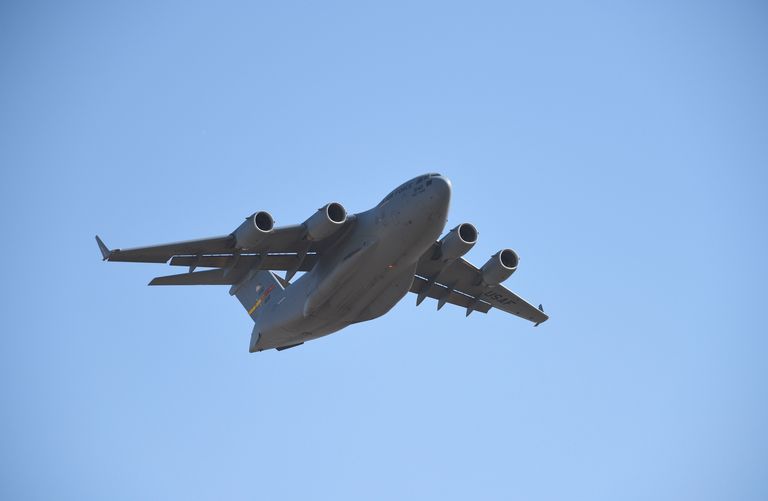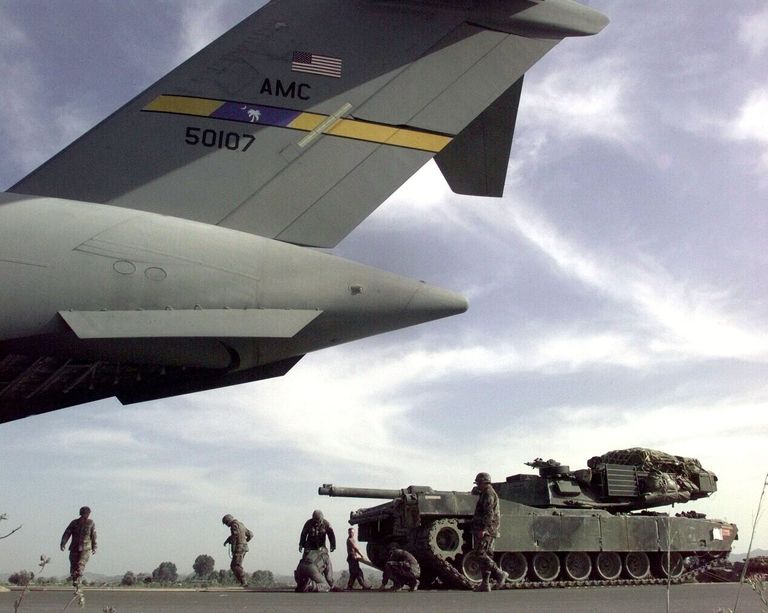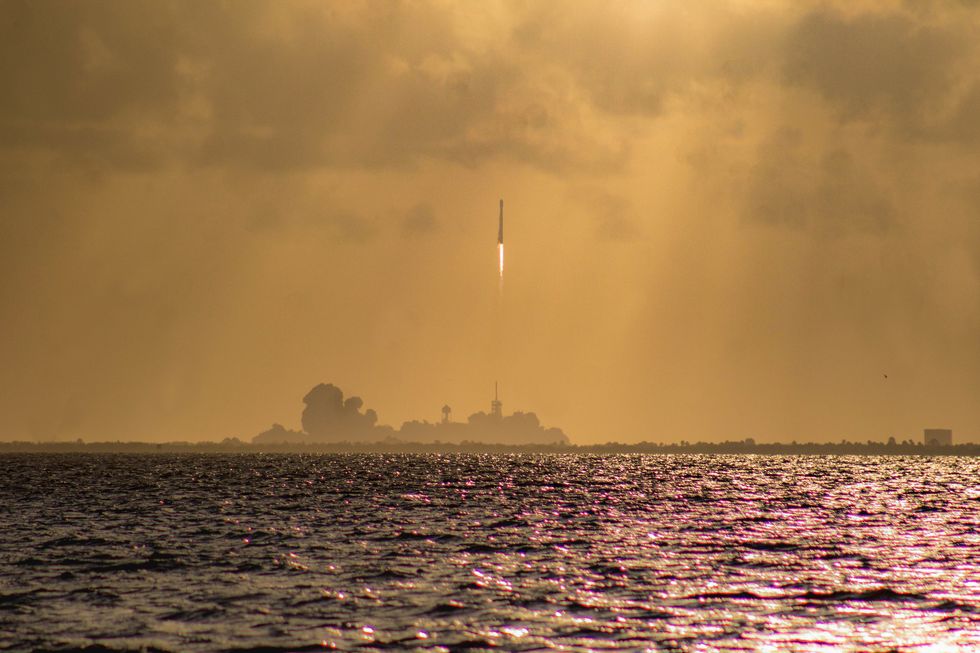The Transportation Command of the Pentagon and Elon Musk’s SpaceX are teaming up to explore using rockets to ship cargo across space. The plan raises the prospect of sending urgently needed supplies to U.S. troops anywhere on Earth within minutes. Although the concept is theoretically feasible, there are many factors that could render it unworkable, including cost and preparation time.
Theoretically, a rocket ship blasting off from Southern California’s Vandenberg Air Force Base might reach low-Earth orbit and reenter the atmosphere almost anywhere on the planet.
For military transport, rocket flight will have staggering implications. For example, a C-17 Globemaster III heavy transport that flies at 500 miles per hour takes 12 hours to get from California to Okinawa, Japan, an island basically on the doorstep of China. However, a rocket could make the trip in 30 minutes or less.
Rockets don’t need a chain of aerial refueling tankers supporting a mission, nor do they need authorization to travel along a winding flight route over foreign nations. Rockets are safe and stable, for now, with no country able to shoot them down along most conceivable routes.

“Think about moving the equivalent of a C-17 payload anywhere on the globe in less than an hour,” Gen. Stephen R. Lyons, the head of Transportation Command, told Air Force magazine. Think about moving the equivalent of a C-17 payload anywhere on the globe in less than an hour. Lyons is possibly referring to the Starship SpaceX rocket. SpaceX has built a giant, 160-foot-tall rocket to carry people and cargo to the moon, Mars, and beyond. It could make short hops around the Earth as well. The Starship is capable of carrying 100 tons of freight, while the C-17 can hold 85 tons.
Two alternative modes of transportation are being investigated. One requires a simple flight abroad from a space base in the continental U.S. The second involves prepositioning supplies on a spacecraft in orbit that, if necessary, could easily de-orbit and land. They were both able to deliver goods in about an hour or less.
Could that work? So far, SpaceX has launched nearly 100 rockets, with only two full or partial failures. A good landing is equally necessary in a resupply flight, and the company is compiling a reasonably successful record in that regard. The technical factors of the military cargo mission are not the dealbreakers, especially considering that an opponent could intercept other earthbound attempts to get cargo to U.S. forces.
Time is one challenge associated with space travel. Although the actual space flight could take just 30 minutes, it might take days, weeks, or even months to plan for a space transportation mission. For space flight, a rocket must be packed, a procedure that involves erecting it at the launch pad, fueling the rocket, and mounting the payload of the cargo.
Rockets can only be launched in reasonably good weather as well; bad conditions can cause delays of up to a week. So it would take much longer to plan for a trip advertised as taking less than an hour. Storing cargo aboard satellites would ensure quick response, but lofting the right supplies into orbit ahead of time would be the challenge.

And then there’s the biggest issue that military space transport has to deal with: the sheer cost.
Capable of carrying 25 tons, a SpaceX Falcon 9 spacecraft costs $28 million to launch. SpaceX predicts that per flight, the Starship rocket could cost as little as $2 million. On the other hand, in a C-17 Globemaster III, a 12-hour flight from California to Japan costs $312,000, a cost that doubles if the airplane flies home to fetch more supplies.
To support the task, there’s also the expense of an aerial refueling tanker like the KC-135 Stratotanker. Rocket transport is easily four times as expensive as sending the same cargo by aircraft, even by the best estimates.
Still, it’s not all about cost, particularly when the bullets fly. If the People’s Liberation Army is blockading an island such as Okinawa, home to 30,000 U.S. military forces, rockets may be the only way to bring supplies to the troops.
Although space transport is still much too costly to become a military operation in peacetime, if Transportation Command and SpaceX work out a strategy to rapidly prepare and launch a cargo rocket during wartime, it might become a useful option.
Want to buy a Tesla Model 3, Model Y, Model S, or Model X? Feel free to use my referral code to get some free Supercharging miles with your purchase: http://ts.la/guanyu3423
You can also get a $100 discount on Tesla Solar with that code. Let’s help accelerate the advent of a sustainable future.





